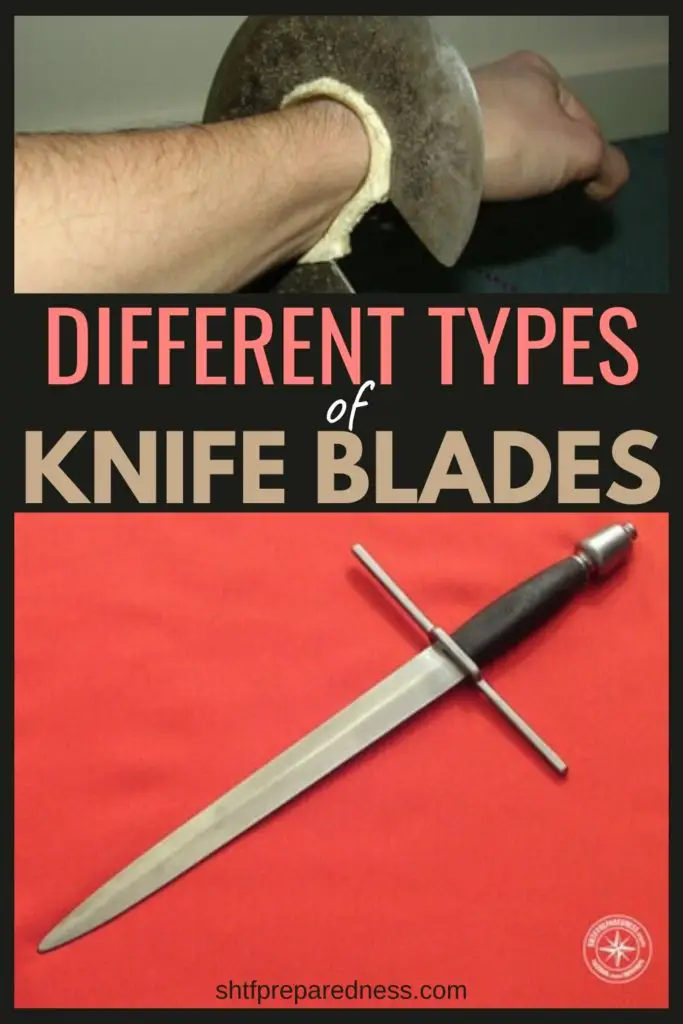Knives and blades have been designed and made for hundreds of years.
With every new year, there are new ways to modernize the blades. Let’s take a look at the different types of knife blades used over the years.

Each era had its own trends and designs. History has thus given us different variations of the humble knife, according to the different uses they were put to, and the owner itself.
There were astounding designs and shapes of blades that were incorporated in knives around the world, many of which are still being produced today. But many of them have undergone lots of modifications.
One thing is sure: knives have stood the test of time. Knives and daggers were the survival kits for people in the early ages.
Now, let’s see what were the thoughts that went behind the designs of the blade in ancient history?
Different Types of Knife Blades: History and Design
Kukri
This is the symbol of the Nepalese Nation and looked much like the machete, which is a chopping weapon.
It had a length of 16 to 18 inches and evolved from a simple farming tool. It was designed in such a way that it had a notch near the grip which directed the blood away so that it wouldn’t wet the handle.
Parrying Dagger
During the 16th and 17th centuries, large swords and shields were replaced by lighter swords and daggers in Europe. This was done to achieve quick defense and to have handy weapons.
There were different designs that were aimed to trap the opponent’s sword for a moment and to give a crucial unguarded second to strike his opponent. Also, there were guards on the daggers to protect the incoming attacks thus saving a lot of time for a defense.
Sai
These originated in China having a round or hexagonal length with a sharpened tip. Its pronged shape was designed so as to deflect blows and they were used in pairs, one would trap the opponent’s sword with the other ready to strike.
Misericorde
Widely used by the French in the 14th Century, these were large but thin stiletto-type knives so that it could easily slip through the joints in an armor.
Turkana Wrist Knife
These were used by the Turkana people of Africa, and the steel or iron was hammered with the help of stones and made into a shape that could be worn into wrists. But as it was forbidden for them to kill one with a spear, they used these knives.
How To Design a Blade
Designing a blade is not an easy task. Consequently, there can be a lot of calculations that go into it. It mainly depends upon the purpose of the knife and for that, the designs differ.
For instance, the design will be different for a Damascus chef knife as compared to a hunting knife. Likewise, a stabbing knife design will be a lot different than a slashing knife.
There are differences in the point type, edge type, and grind designs. As a result, you get a different blade design for each job.
Point Type Knife Designs and Their Uses
Drop Point
Drop point has a convex curve dropping from the spine to the curve. This design gives the knife strength and easy sheathing.
Clip Point
Here, the curve is concave and this blade design is generally used in survival knives.
Spear Point
This has symmetrical convex curves and as the name suggests is designed for spearing.
Tanto Point
This design features one or more straight edges to the point and is apt for fighting and tactical purposes.
Edge Type Designs and Their Uses
Straight
This blade design has an edge that usually has small curves and a belly. It’s used for smooth cutting such as in cases of slicing or skinning an animal. This is mostly used in shaving, skinning an apple, or even skinning off a deer.
Partially Serrated
These blades have a portion of serrations or scallops near the handle. Used mainly for cutting harder materials or surfaces. A hard tree trunk or a tough rope would not require more than a second to be ripped apart.
Serrated
The blades have a saw teeth design and cut through most fibrous things such as ropes and straps, which are otherwise difficult using a plain edge. The serrations tend to grab the cutting surface and easily chop it off the root.
Grind Designs
Hollow
Extremely sharp grind but relatively fragile generally the design of razor blades and skinning knives.
Full Convex
This design has a lot of metal behind the edge that adds to the strength and found in axe blades used for the purposes of splitting.
Scandinavian or Sabre
It’s a straight taper grind that has a metal support and a sharp edge. This grind makes the blade easier to sharpen and hence is used in most survival knives.
Other Tips for Designing Knife Blades
Tough
It should be tough so cracks and chips are prevented. So, harder steel should be avoided.
Flexibility
It should be flexible enough so that you can make the required movements without breaking it.
Resistance
The blade should be such that it can resist wear from cutting, resist corrosion, and withstand the damage from water or corrosive materials like salt.
Edge Retention
The blade should be such that it retains its sharpness even after daily use. Even though the sharpening of a blade is inevitable, the frequency needed should be minimal.
Conclusion
Hopefully, you now understand better the reasons the knives were made like that back then. You should also know better how the blades are designed today.
Choosing the best knife with an artistically crafted blade design requires an eye of a perfectionist. In the end, it all depends upon the purpose the knives are going to be used for, and the design speaks for it.
